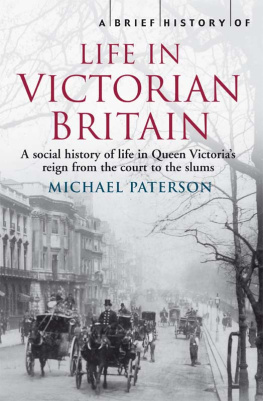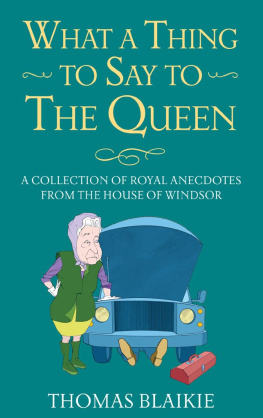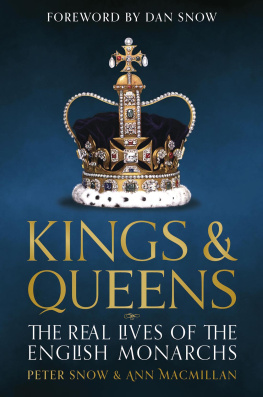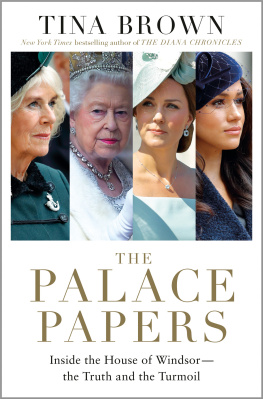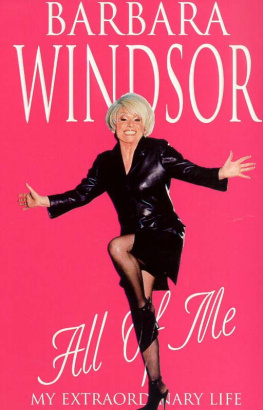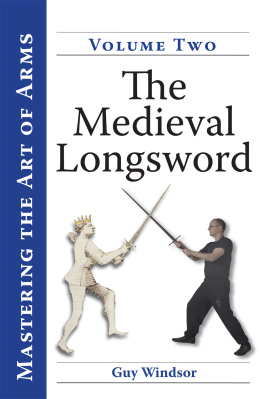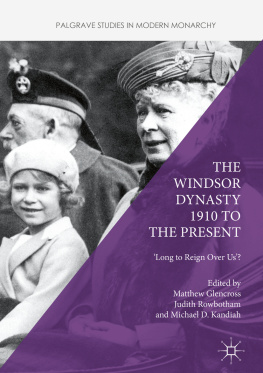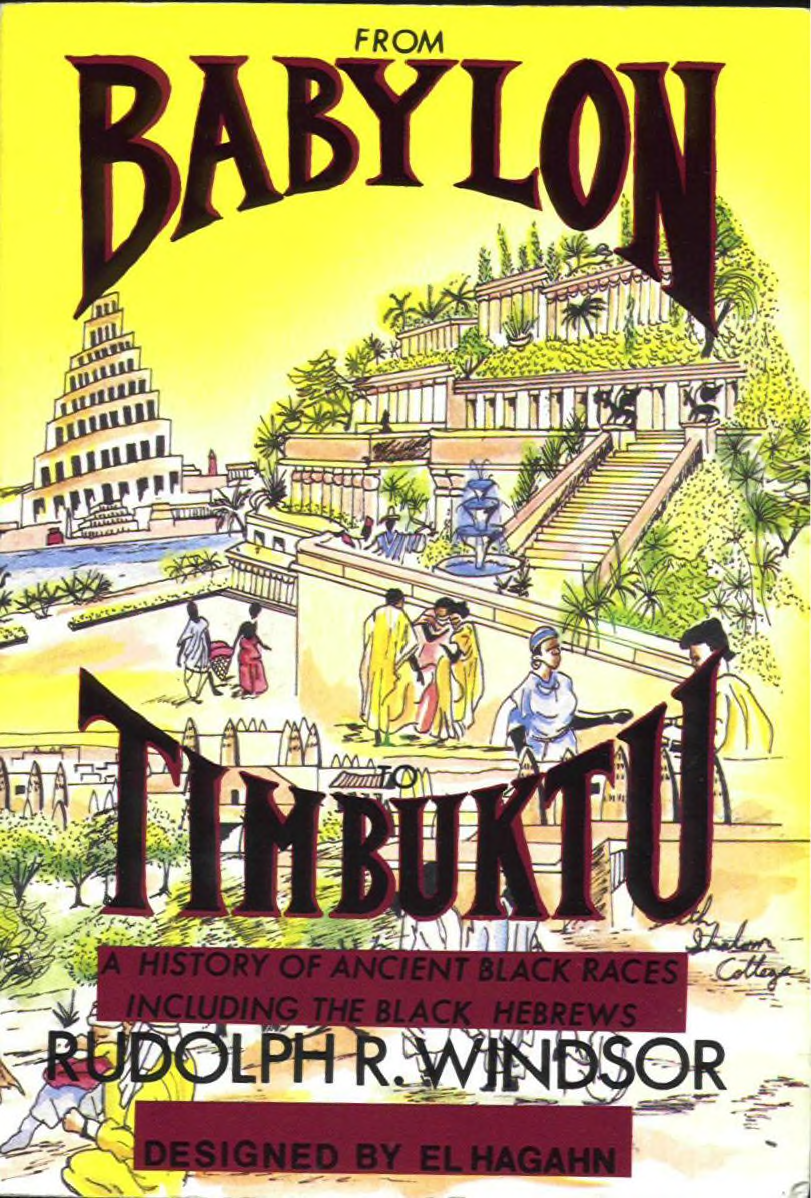Michael Paterson is the author of A Brief History of the Private Life of Elizabeth II and Private Life in Britains Stately Homes, also published by Constable & Robinson.
Recent titles in the series
A Brief History of Roman Britain
Joan P. Alcock
A Brief History of Angels and Demons
Sarah Bartlett
A Brief History of Bad Medicine
Robert Youngston
A Brief History of the Private Life of Elizabeth II
Michael Paterson
A Brief History of Ireland
Richard Killeen
A Brief Guide to the Supernatural
Leo Ruickbie
A Brief Guide to Star Trek
Brian J. Robb
A Brief History of the English Reformation
Derek Wilson
A Brief Guide to James Bond
Nigel Cawthorne
A Brief Guide to Star Wars
Brian J. Robb
A Brief Guide to Private Life in Britains Stately Homes
Michael Paterson
A Brief Guide to Native American Myths and Legends
Lewis Spence
A Brief Guide to Jane Austen
Charles Jennings
A Brief Guide to J.R.R. Tolkien
Nigel Cawthorne
A Brief History of the Spy
Paul Simpson
A Brief Guide to Jeeves and Wooster
Nigel Cawthorne

Constable & Robinson Ltd.
5556 Russell Square
London WC1B 4HP
www.constablerobinson.com
First published in the UK by Robinson,
an imprint of Constable & Robinson Ltd., 2013
Copyright Michael Paterson, 2013
The right of Michael Paterson to be identified as the author of this work has been asserted by him in accordance with the Copyright, Designs & Patents Act 1988.
All rights reserved. This book is sold subject to the condition that it shall not be reproduced in whole or in part, in any form or by any means, electronic or mechanical, including photocopying, recording, or by any information storage and retrieval system now known or hereafter invented, without written permission from the publisher and without a similar condition, including this condition, being imposed on the subsequent purchaser.
A copy of the British Library Cataloguing in Publication Data is available from the British Library
UK ISBN: 978-1-78033-803-3 (paperback)
UK ISBN: 978-1-78033-804-0 (ebook)
1 3 5 7 9 10 8 6 4 2
First published in the United States in 2013 by
Running Press Book Publishers,
A Member of the Perseus Books Group
All rights reserved under the Pan-American and International Copyright Conventions
This book may not be reproduced in whole or in part, in any form or by any means electronic or mechanical, including photocopying, recording, or by any information storage and retrieval system now known or hereafter invented, without the written permission from the publisher.
Books published by Running Press are available at special discounts for bulk purchases in the United States by corporations, institutions, and other organizations. For more information, please contact the Special Markets Department at the Perseus Books Group, 2300 Chestnut Street, Suite 200, Philadelphia, PA 19103, or call (800) 810-4145, ext. 5000, or e-mail .
US ISBN: 978-0-7624-4804-3
US Library of Congress Control Number: 2013931823
9 8 7 6 5 4 3 2 1
Digit on the right indicates the number of this printing
Running Press Book Publishers
2300 Chestnut Street
Philadelphia, PA 19103-4371
Visit us on the web!
www.runningpress.com
Typeset by TW Typesetting, Plymouth, Devon
Printed and bound in the UK
Cover design by Nikki Parkes; Cover images: Daily Mail, Corbis, Press Association
This book is dedicated to
PHIL AND ROSEMARY RIPLEY
to convey a lifetimes love and gratitude.
CONTENTS
ACKNOWLEDGEMENTS
I would like to thank several people for their time or trouble or interest with regard to this book. My wife Sarah has, with customary good grace, put up with the disturbance to our lives. Duncan Proudfoot and Becca Allen at Constable & Robinson have both shown a good deal more kindness and patience than I deserved. I have relied on my charming editor, Lynn Curtis, to make sense of the text. Her criticism has been very useful and her chatty emails a pleasure to receive. I would also like to thank two young friends: Yasmin and Adam al-Hassani, whose interest in the royal family spurred my efforts.
ROYAL WEDDING
The genius of an event like this is its simplicity. Its simultaneously magnificent and very simple.
Simon Schama, historian
April 2011
London is about to witness a national celebration that will it is taken for granted also be of interest globally. It will be followed with fascination, in some quarters even with hysteria, in countries all over the world. The audience will run into the tens of millions and the television rights will command a kings ransom.
In the city all is in readiness. The flags and bunting are hung out, the souvenirs are in the shops, the bands and troops are rehearsed, the journey to Westminster Abbey has been timed to the second. The route has been scoured by anti-terrorist officers and the public chastened by the reminder that such a high-profile event provides a tempting opportunity for extremists.
On the day itself the crowds, blessed on this occasion by unseasonable, summer weather, have slept in the parks and on kerbsides, or have caught trains at hideous hours of the morning to ensure that they will see something. In a televisual age it goes without saying that the whole event can be more comfortably, and more comprehensively, enjoyed by those who have stayed at home. Such is the magnetic pull of atmosphere, however, that the desire to be there has driven many thousands to the pavements of Westminster and St Jamess. There they will endure long hours of boredom and discomfort for the sake of the few minutes excitement they will experience. It is obviously worth it, to judge by their swelling numbers.
The crowds wait, fortified with thermos coffee and by anecdotes swapped about similar events, or about the adventures experienced in getting here from Croydon, Rochdale, Toronto or Auckland. Vendors patrol up and down the crush-barriers with armfuls of little Union Jacks, calling their mantra: WAVE yer flag! Where do these men go between such state occasions? One only sees them here.
Somehow the interminable hours will pass, the anticipation and excitement will increase. Eventually there will be cheering in the distance, swiftly coming closer. The noise will swell into genuine, spontaneous delight and the flags will be waved with impressive vigour. There will be the slow purr of a car engine or the swift clip-clop of carriage horses. Though the principal participants the bride and groom, the queen and the Duke of Edinburgh will be immediately obvious, many others will not be recognized until their vehicle has passed. People will ask: Who was that? Who did we just see? Was that Beatrice and Eugenie? Which was which?
In the Abbey itself there are television cameras everywhere. Can it really have been within living memory the time of the queens own wedding and then her coronation that there was reluctance to allow filming of the ceremonies, or even their broadcasting on radio? The arguments that these are either private family occasions or religious services too holy to be treated as public entertainment have been decisively lost. Now it is entirely expected that the viewing public will see the occasion from start to finish. This even includes the empty moments before the service begins, as the congregation arrives. Men dressed in suits or uniforms or tailcoats wander in, sit down, gaze about them. Most are unknown to those watching at home, though a smattering of foreign royals will be recognized by those who read the glossy social magazines. Here is Prince Albert of Monaco, there is Haakon Magnus, Crown Prince of Norway, over there is whats-her-name from somewhere else. The faces are known although the names and even the countries are not. In attendance, too, are the usual celebrities, picked out by the cameras as they sit and fidget. No state occasion seems to be complete without their over-familiar faces appearing somewhere in the background, a blurring of the boundary between ceremonial and entertainment. The royals arrive, the men mostly in uniform. Where does this notion come from that they dress to attend a wedding as if they were going to a war? Nevertheless, the splendour of scarlet and blue and gold adds considerably to the look of the occasion. This is one of those rare moments when it is the costume of the men and not of the women that most impresses.
Next page

